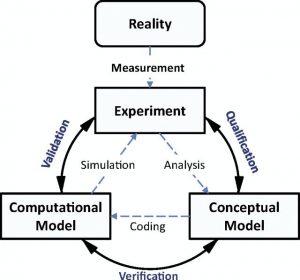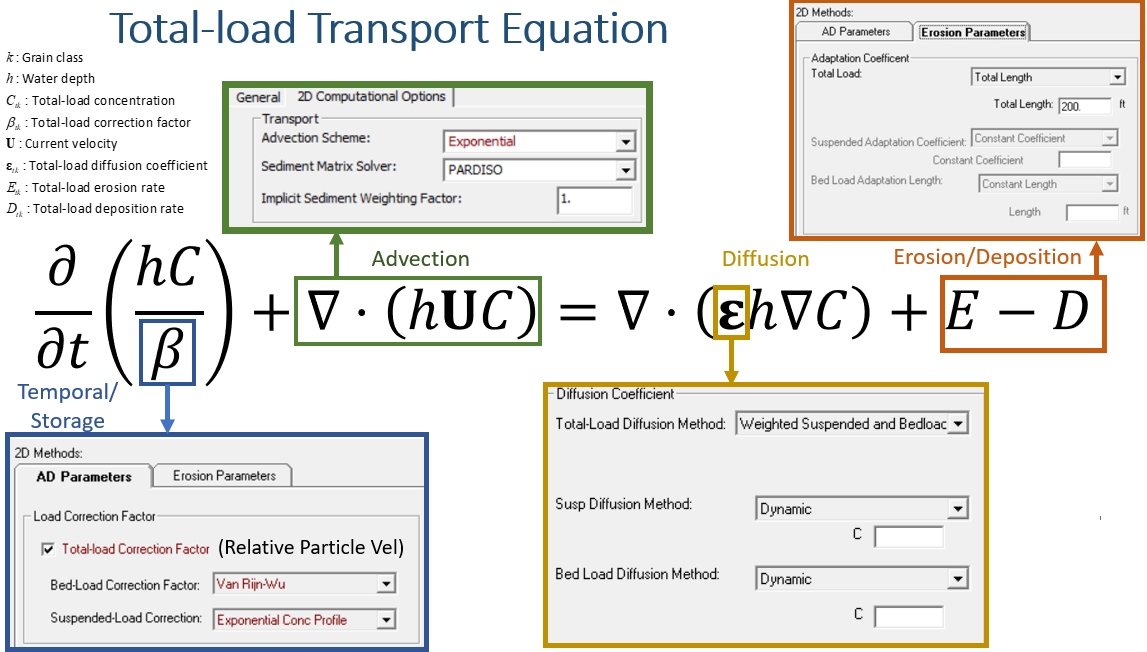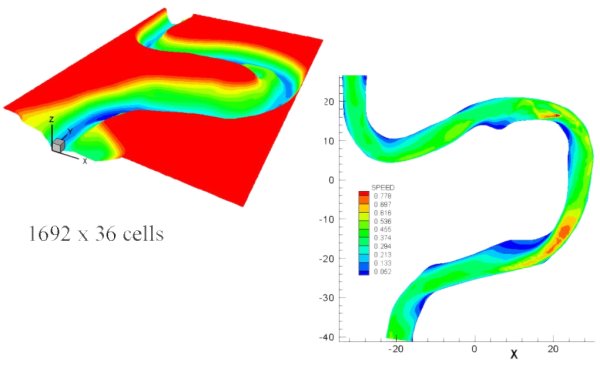Verification and Validation: Understand with an example
| Aspect | Verification | Validation |
|---|---|---|
| Definition | Ensures that the CFD model is implemented correctly according to the developer’s concept. | Ensures that the CFD model accurately represents real-world scenarios. |
| Objective | To confirm that the model is solving the equations correctly (“solving the equations right”). | To confirm that the right equations are being solved to represent physical phenomena accurately (“solving the right equations”). |
| Focus | Focuses on identifying and quantifying errors in the numerical model. | Focuses on quantifying uncertainties in the input data and physical models. |
| Error Type | Quantifies roundoff errors, iterative convergence errors, and discretization errors. | Quantifies input uncertainty and physical model uncertainty. |
| Methodology | Involves mesh refinement, error estimation, and grid convergence studies. | Involves sensitivity analysis, uncertainty analysis, and comparison with experimental data. |
| Outcome | Determines the accuracy of the numerical solution. | Determines the accuracy of the CFD model in representing real-world conditions. |
| Importance | Ensures the model is correctly implemented and free from coding or mathematical errors. | Ensures the model can be trusted to predict real-world behaviors. |
| Contribution | Builds confidence that the CFD model is implemented correctly. | Builds confidence that the CFD model’s predictions are reliable for practical use. |

Importance of Both Processes:
Confidence-Building:
- Verification ensures that the numerical solution is free from errors due to incorrect implementation, providing confidence that the equations are being solved correctly.
- Validation ensures that the model is a faithful representation of the real-world system, providing confidence that the model predictions are reliable for practical applications.
Error and Uncertainty Quantification:
- Verification quantifies the errors associated with the numerical solution, such as discretization errors, which are crucial for understanding the accuracy of the solution.
- Validation quantifies uncertainties in the model inputs and the physical modeling, which is critical for assessing the overall reliability of the model predictions.
Credibility of CFD Results:
- A CFD model that has undergone rigorous verification and validation is more credible and trustworthy. Verification provides assurance that the numerical solution is correct, while validation confirms that the model accurately represents the physical phenomena it aims to simulate.
Improvement and Refinement:
- Through verification, developers can identify and correct issues in the numerical implementation, leading to more accurate simulations.
- Through validation, modelers can refine their models to better match experimental data, improving the model’s predictive capabilities.
Example: Sediment Transport Modeling in a River
Imagine we are developing a CFD model to predict how sediment is transported along a river. The model includes factors like water flow, sediment size, and riverbed characteristics.

Verification
Objective: Ensure the model’s equations and calculations are implemented correctly.
Example Process:
- Grid Refinement: We create different grid sizes (fine, medium, coarse) to see if the results (e.g., sediment concentration at a point) remain consistent as the grid becomes finer.
- Checking Equations: We verify that the equations used to describe sediment transport, like the sediment continuity equation, are correctly coded into the model.

- Testing Basic Scenarios: We might start with a very simple scenario where the expected behavior is known (e.g., uniform flow and constant sediment size) and check if the model’s outputs match these expectations.
Outcome: We now confirm that our model is solving the equations correctly without coding errors or numerical inaccuracies. For instance, you verify that the sediment mass entering a segment of the river equals the sediment mass leaving, minus the sediment deposited on the riverbed, matching the conservation of mass principle.
Validation
Objective: Ensure the model accurately represents real-world sediment transport.
Example Process:
- Comparison with Experimental Data: We collect real-world data on sediment transport from a specific river section, such as sediment concentrations measured at various points along the river.
- Running the Model: We run our sediment transport model using input data (e.g., water flow rate, sediment size) from the real-world river.

- Comparison: We then compare the model’s predictions (e.g., predicted sediment concentration at a certain location) with the actual field data.
 Outcome: If the model’s predictions closely match the real-world measurements, we validate that the model can accurately represent the real-world sediment transport process. For example, if the model predicts a sediment concentration of 200 mg/L at a certain point and the field data shows 195 mg/L, the model is validated as it closely represents the real-world scenario.
Outcome: If the model’s predictions closely match the real-world measurements, we validate that the model can accurately represent the real-world sediment transport process. For example, if the model predicts a sediment concentration of 200 mg/L at a certain point and the field data shows 195 mg/L, the model is validated as it closely represents the real-world scenario.
Key Point:
- Verification: “Are we solving the equations right?”
- Validation: “Are we solving the right equations?”
By performing both verification and validation, you can be confident that your sediment transport model is both correctly implemented and accurately represents the real-world behavior of sediment in the river.